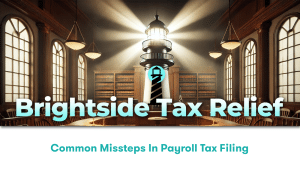Understanding the IRS Payment Plan
As one of the largest tax relief companies across the nation, Brightside Tax Relief LLC has considerable experience in dealing with the guidelines and requirements of the Internal Revenue Service (IRS). One such service provided by the IRS is the Payment Plan, a scheme developed for taxpayers who can’t afford to clear their tax debt in one lump sum. Instead, they can schedule their payments over a specified period.
Navigating the process of an IRS Payment Plan Payment is a bit more complicated than it initially seems. While the improvement to cash flow is indeed a relief, one must stay aware of the specific terms and conditions associated with this plan.
The Initial Hurdles
Requesting an IRS Payment Plan seems straightforward enough. The IRS has an online application process that is usually processed within a few days. However, several obstacles can be met almost immediately, such as:
– The application process itself: Though it is online, it requires a significant amount of paperwork, which can potentially be challenging for those with limited experience or time constraints.
– Approval phase: Getting approval is contingent on numerous factors, including the amount of debt owed and previous tax compliance.
– Down payments: In some cases, taxpayers may need to provide an initial payment to qualify for such a plan.
Rising to the Challenge of Regular Payments
The largest difficulty faced by individuals on an IRS Payment Plan is making regular payments. This payment plan can last for many months or even years, so maintaining this payment routine over such a long period requires consistent financial management.
To ensure regular IRS Payment Plan Payments, individuals should:
– Prioritize the payment: An IRS Payment Plan must be given the highest priority. Failure to pay as agreed can lead to penalties, additional interest, or nullification of the agreement.
– Budget effectively: Individuals must create a strict budget, considering all of their income sources and expenses, to ensure that they always have enough to meet their monthly payment.
– Regularly review the arrangement: Conditions change, and an initially affordable payment may become a strain. You have the right to request a change in the agreement, especially when financial circumstances worsen.
Technical Issues and Changes in Circumstances
Unexpected changes in circumstances often pose challenges in making IRS Payment Plan Payments. Financial hardships like job loss, unexpected expenses, or medical situations can impair the ability to make the agreed-upon payments. The IRS offers options for dealing with these situations, such as a temporary delay of the collection process known as ‘Currently Not Collectible’ status or an adjustment to the existing payment agreement.
On top of this, technical issues with making payments are not uncommon. Taxpayers have reported problems with online transactions, autopay set-ups, and even misdirected payments.
Handling Penalties and Interest
Another significant challenge with the IRS Payment Plan is handling penalties and the accumulating interest. Many taxpayers are unaware that even while making consistent and prompt payments, their tax debt can steadily rise due to penalties and interest.
You can fight against this:
– Understand your agreement: Always be aware of the conditions stated in your agreement.
– Make prompt payments: Delays or missed payments invite penalties and a spike in interest.
– Consider professional help: Tax relief companies like Brightside Tax Relief LLC can help in navigating such issues.
Useful Link for Guidance
The IRS itself provides a comprehensive guide detailing every aspect of the payment plan.
Finding Solutions Together
Staying aware and proactive is your best chance at overcoming these hurdles and avoiding further financial strain. Here at Brightside Tax Relief LLC, we are committed to guiding you through this process. We believe that all taxpayers – regardless of circumstances – have the right to a fair, efficient, and achievable IRS Payment Plan Payment.
Remember, an IRS Payment Plan is not a one-size-fits-all solution. It must be tailored around your current financial status and your long-term goals. So, make sure that it aligns with your finances, complements your budget, and does not incur more debt.
At the end of the day, the IRS Payment Plan is not a tax problem; it’s a financial solution. It creates a structured path towards clearing tax debt while ensuring minimal disruption to your finances. Understanding the challenges and preparing for them will undoubtedly help make this journey smoother.




